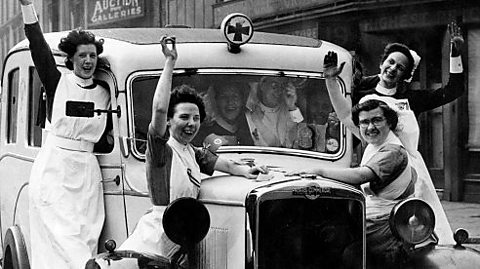On 4 July 2024, the UK will hold a general election in July for the first time since 1945.
Back then, the country had just celebrated Victory in Europe Day (VE Day) on 8 May following the surrender of Nazi Germany. However, World War Two was still ongoing elsewhere, in the Pacific War. Due to the impact of the conflict, a UK general election hadnтt been held in 10 years.
The incumbent prime minister was Winston Churchill, a Conservative MP who had led the country since 1940.
As a result of the ongoing war, the 1945 election was organised a little differently. Nowadays, polls close at 10pm on the day of voting, but in this instance, time needed to be allowed for soldiers stationed abroad to cast their vote. While voting started on 5 July, the votes werenтt counted until 26 July.
Despite Churchillтs personal popularity, it was a victory for Clement Attlee and the Labour Party, which won 47.7% of the popular vote and secured a majority of 146 seats. The Conservative Party lost 189 seats. This was the first time the Labour Party secured an outright majority in Parliament.
But what did the world look like in July 1945?
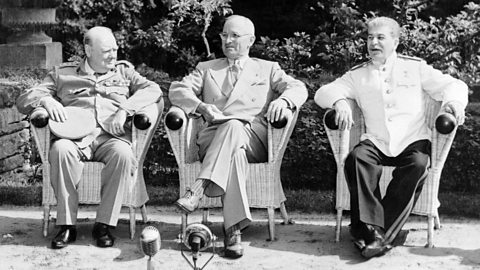
Dealing with the fallout of World War Two
While the votes from the election were still coming in, Churchill met with US President Harry S Truman and USSR Premier Joseph Stalin at the Potsdam Conference, near Berlin.
The purpose of this meeting was for the тBig Threeт to discuss the future of Europe following the end of the war there.
Since their last meeting in February 1945, the US President, Franklin D Roosevelt, had died and been replaced by Truman, the vice-president, who viewed dealing with Stalin far more negatively. When the result of the UK election was announced, Churchill left the conference and Attlee took over negotiations.
Discussions were difficult (a sign of things to come during the Cold War) but a number of agreements were reached, including:
- Germany was to be divided into four zones and occupied by the British, Americans, Soviets and French
- Germany would be demilitarised and disarmed
- Laws passed by the Nazis would be repealed and those suspected of war crimes would be put on trial
- A Council of Foreign Ministers was set up to draft peace treaties with Germanyтs allies, including Italy and Hungary.

Alongside China, Britain and the United States also issued the Potsdam Declaration on 26 July, threatening Japan with the тinevitable and complete destructionт of its forces and тthe utter devastation of the Japanese homelandт, if it did not surrender. Celebrations following VE Day had been slightly tempered by the knowledge that soldiers could be redeployed to Asia, in the fight against Japan.
Ultimately, the war was brought to an end by the US dropping two atomic bombs on the Japanese cities of Hiroshima and Nagasaki in early August 1945, killing tens of thousands of people.
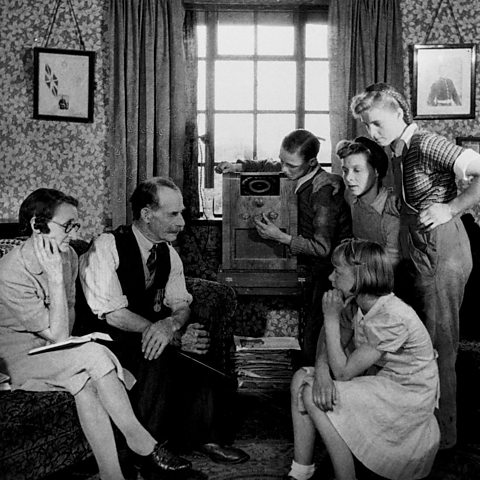
Entertaining ourselves as the war loosened its grip
There was no television in 1945. Transmissions stopped in 1939 and would not resume until 1946, but election day 1945 saw plenty of choice on the radio.
Radio Times listings for the day are separated into the Home Service and the General Forces programme - although any mention of the big vote itself is conspicuous by its absence. Home Service highlights included an hour of For the Schools programming at 2pm, with a nature study on school pets, a Welsh language broadcast then a section on the signing of the Childrenтs Charter in Geneva to help young people impacted by the war.
Childrenтs Hour at 5.20pm was the first instalment of Robert Louis Stevensonтs The Black Arrow, a story centred around the Wars of the Roses. The first of a three-part documentary, The War in the Pacific, began at 8pm - while a stellar cast was assembled for the sixth of eight episodes of a made-for-broadcast performance of Shakespeareтs King Henry the Fourth (sic) at 9.30pm. It starred theatrical greats Laurence Olivier, Sybil Thorndike and Ralph Richardson.

The General Forces programme focused on music and comedy with Forces Favourites at 4.15pm, where British servicemen based overseas selected their own records and Hospital Mailbag at 8pm included more record requests along with the results of the Hereтs Wishing You Well Again competitions.
In cinema, 1945 saw the release of some classic films which are fondly remembered today. One of the more notable is National Velvet, an adaptation of Enid Bagnoldтs 1935 novel about a young girl who rides her horse to victory in the Grand National. It brought a young Elizabeth Taylor to the worldтs attention and she went on to become a major, Academy Award-winning star.
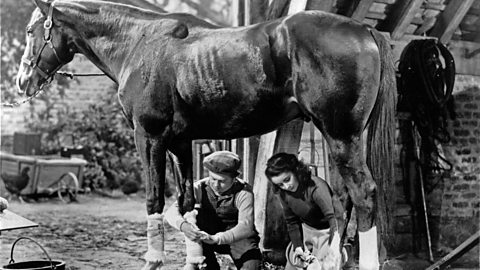
But what to wear for a night at the pictures? Fashion-wise, clothes rationing would remain in place in the UK until 1949 and shortages of materials affected both the British and American markets. Utility clothing, made specifically with a keen eye on conserving raw materials such as cotton, were made throughout the war and into the post-war years. Although made simply, and never extravagant, they did have their own styles and colours which became popular.
It was February 1947 before fashion house Christian Dior introduced a more sumptuous look that the world had not seen since the pre-war days.

The sporting spirit in wartime
WW2 had put a halt to many of 1945тs world sporting events, and major competitions such as Wimbledon and Tour de France had been suspended.
With many footballers enlisted to fight in the war, competitive football in England was suspended between 1939 and 1946. An alternative tournament called the Football League War Cup was set up in place of the FA Cup. Its last iteration took place in 1945, with the final hosted in June at Stamford Bridge. The match saw Bolton Wanderers beat Chelsea 2-1.
Across the pond, the sole golf major of the year went ahead. The 27th PGA Championship 1945 saw Byron Nelson, often referred to as one of the greatest golfers of all time, crowned champion. Played 9-15 July, Nelson beat his opponent Sam Byrd, a former major league baseball player, winning four and three in the final.
That same year, the American athlete and Olympic gold medallist Babe Zaharias competed in three PGA Tour events. She made the initial cut in all three, becoming the first and only woman to achieve so.
She was subsequently voted Female Athlete of the Year 1945 - the second of six times she would receive the award - by the Associated Press.


A snapshot of life
- Price of a 2lb loaf of bread in 1945: 4ТНd (just over ТЃ1 today)
- 1946 average house price: ТЃ1,459 (approximately ТЃ52,600 today)
- Rationing was still in place. Petrol since 1939, clothes since June 1941 and soap since February 1942. Bread was never rationed in the war, but was from July 1946 due to a wheat shortage. Food rationing ended completely in 1954.
This article was published in May 2024

Can you list these 20th Century UK Prime Ministers in order?
Was Stanley Baldwin at Number 10 before Asquith, or Attlee?
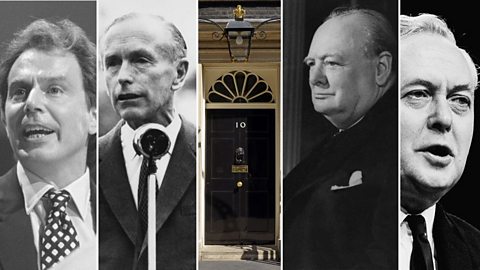
When Prime Ministers step down: resignations throughout history
A look through history at politicians who resigned from office

What happened after VE Day?
Whilst the war in Europe ended on VE Day, it took longer for life to return to normal.
